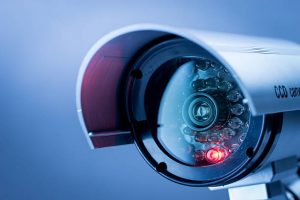
How to Make Your Home Safer
Burglaries happen every 15 seconds in America. Even more, Stressing for new homeowners is that 73 per cent of these robberies happen to residential properties.
One of the top priorities when going into a home, so here are the first ten things you ought to do to help secure your new home.
- Secure the doors.
Perform a review of not just your front door but doors around your dwelling. Ensure the frames are strong, the hinges are protected, the timber isn't hollow, and, if your door has a mailbox, that someone cannot reach through it to unlock the door. The front door may be a nice focus of your house but do not sacrifice safety for a pretty view. If your door does not have a peephole or a deadbolt, you should install those immediately to make the door even more protected.
- Lock the windows.
The latches on windows is not effective every time, some time they prove to be very flimsy. Replace them or key-operated levers to help beef up your security. You might also think about inserting tempered or laminated glass for a stronger hold. Out of all burglaries, about 23% occur from the first story window, but don’t forget about the cellar windows and second story window.
- Buy a security system.
Some kind of security system, whether it is a fundamental DIY installation or a fully monitored smart system. Assess the needs for your region and pick a system you are comfortable with. A few of the fundamentals to consider including an alarm, motion sensors for the doors and windows, and carbon monoxide and smoke detectors.
- Meet the Neighbors.
A useful first line of defence against a house invasion. They know the area and will keep an eye on your home when you're away -- but they cannot do that if they do not know you. Make an effort to meet your neighbours and form good relationships so you will have people to rely on. If something fishy is happening in your town, a fantastic neighbour will call and let you know.
- Perform a Mock Burglary.
Now that you have made Friends with the neighbours have among these walks around and through your home to search for things that are not secure. A mock burglary can give you great insight into areas of your safety program which may need tightening up.
- Find your Resources.
Find information on Contacting the local authorities, check for a neighbourhood watch program, and see what other sources your neighbourhood has available to help in home safety? Some local police forces will send an officer over to offer you tips on securing your home for your loved ones.
- Light up the Landscape.
The FBI states the majority of burglaries occur during the day, probably when you are on the job. But that does not mean that you do not need to secure your house at night. Place lights around your front and rear yard. Use lights which come equipped with motion sensors for more protection. An intruder may be less likely to break in if there's a spotlight on them.
- Eliminate hiding places.
Offer your home curb appeal, but they also provide burglars with a convenient place to hide. Trim down plants and trees near your home that may be used for cover and opt for smaller flowers instead.
- Add security signs.
Many security Providers also have yard signs and window stickers with safety bundles to help deter potential thieves. If you've got them, put them up. If you do not have a security program, weigh the advantages and disadvantages of bogus signage. Sometimes the belief that there is a safety system inside can be as powerful as actually having one.
- Make a plan.
It is not enough to Have security measures in place -- you need a plan if they fail. Home. Establish rules for opening the door for strangers, locking the doors and ensure your kids Know what to do if a break-in happens and have an exit strategy in case of a fire or other catastrophe.



